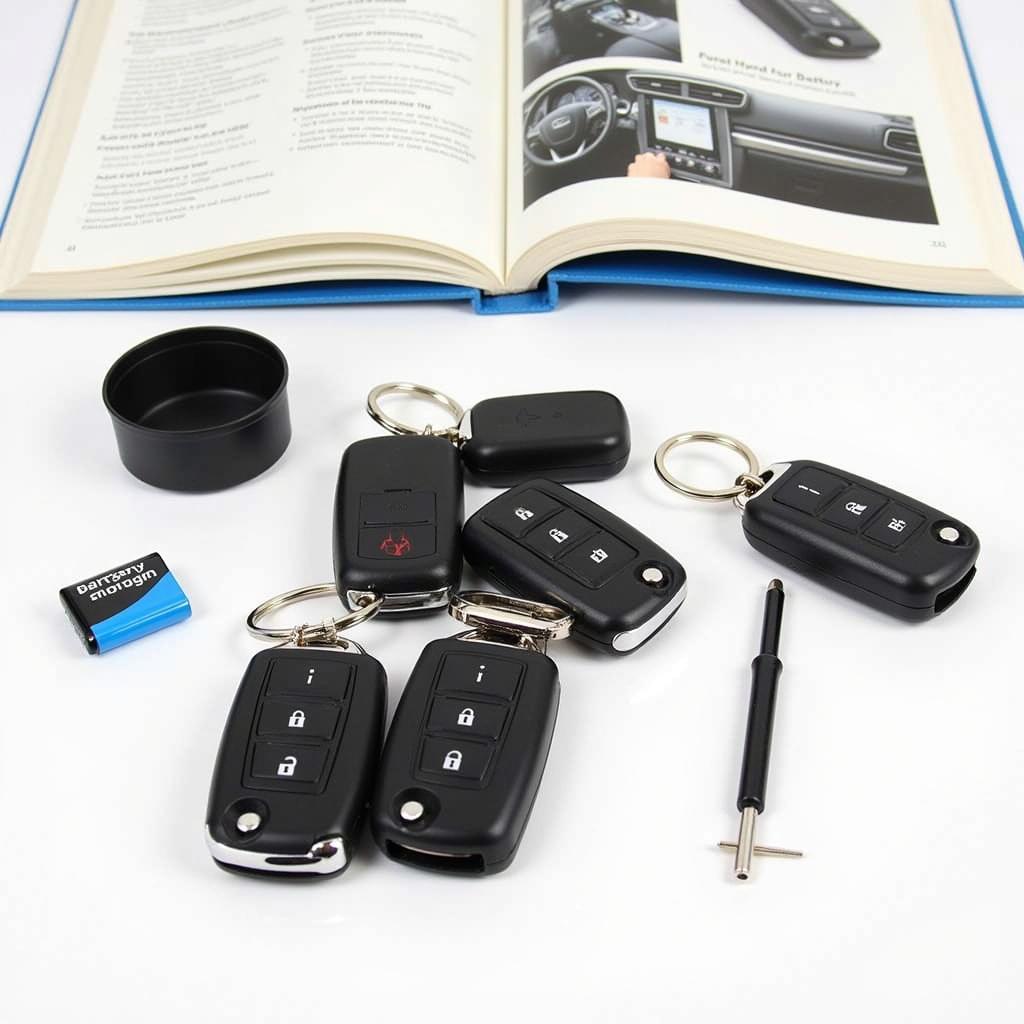The dreaded brake pad warning light illuminating on your Mini Cooper’s dashboard – a sight no driver wants to see. But don’t panic! This common issue often simply means your brake pads are wearing down and need replacing. This article delves into the intricacies of the brake pad warning light in your Mini Cooper, guiding you on how to diagnose the problem and take appropriate action.
Understanding Your Mini Cooper’s Brake Pad Warning Light
Your Mini Cooper is equipped with a sophisticated sensor system designed to alert you of potential issues, including worn brake pads. The brake pad warning light is a key component of this system, acting as your early warning system for brake pad wear.
When the brake pad warning light comes on, it typically indicates one of two things:
- Worn Brake Pads: The most common reason for the light to illuminate is that your brake pads have worn down to a point where they need replacing.
- Sensor Malfunction: While less common, there’s a chance the sensor itself could be faulty, triggering the warning light even if your brake pads are fine.
Common Causes of Brake Pad Wear
Understanding what causes brake pads to wear down can help you anticipate and potentially prolong the life of your brakes. Here are some common culprits:
- Driving Habits: Frequent hard braking, city driving with lots of stop-and-go traffic, and riding the brakes can accelerate wear.
- Vehicle Load: Carrying heavy loads or frequently towing puts additional stress on your brakes, leading to faster wear.
- Brake Pad Quality: Lower quality brake pads tend to wear down more quickly than higher quality options.
Diagnosing the Problem: Is it Really the Brake Pads?
While the illuminated warning light is a strong indicator of worn brake pads, it’s essential to confirm the diagnosis before rushing to replace them. Here’s a simple checklist:
- Visual Inspection: If you’re comfortable doing so, you can often visually inspect your brake pads. Look through the spaces between the wheel spokes for a thin metallic strip on the brake pad. If this strip is nearly gone or touching the rotor, your pads need replacement.
- Listen for Noises: Screeching or grinding sounds when braking are telltale signs of severely worn brake pads.
- Professional Inspection: When in doubt, the safest option is to have your brakes inspected by a qualified mechanic. They can accurately assess the condition of your pads and determine if replacement is necessary.
What Happens if I Ignore the Warning Light?
Ignoring the brake pad warning light can lead to serious safety hazards and costlier repairs down the line.
- Reduced Braking Efficiency: Worn brake pads compromise your Mini Cooper’s ability to stop effectively, increasing stopping distances and the risk of accidents.
- Damage to Rotors: Continuing to drive with worn brake pads can damage the brake rotors, leading to costly repairs.
- Complete Brake Failure: In extreme cases, ignoring the warning light for extended periods can lead to complete brake failure, putting you and others on the road at significant risk.
Brake Pad Replacement Options
If your brake pads do need replacing, you have several options:
- DIY Replacement: If you’re mechanically inclined, you can replace the brake pads yourself. However, this job requires specialized tools and knowledge of brake systems.
- Professional Mechanic: The safest and most convenient option is to have your brake pads replaced by a qualified mechanic. They have the expertise and tools to do the job correctly and efficiently.
Resetting the Brake Pad Warning Light
Once you’ve addressed the underlying issue, you’ll need to reset the brake pad warning light on your Mini Cooper. The reset procedure can vary slightly depending on the model year, but generally involves the following steps:
- Turn the Ignition Off: Ensure your Mini Cooper’s engine is off and the key is removed from the ignition.
- Locate the Reset Button: Open the hood and locate the brake fluid reservoir. The reset button is typically found on the underside of the reservoir cap.
- Press and Hold the Button: Press and hold the reset button while turning the ignition key to the “on” position (do not start the engine).
- Continue Holding: Hold the button down for a few seconds until the brake pad warning light goes off.
It’s crucial to consult your Mini Cooper’s owner’s manual or seek guidance from a professional if you encounter difficulties resetting the warning light.
Can I Drive with the Brake Pad Warning Light On?
While it might be tempting to continue driving with the brake pad warning light on, especially if you’re only a short distance from your destination, it’s strongly advised against. Driving with worn brake pads significantly compromises your safety and increases the risk of accidents.
If the warning light comes on:
- Assess the Situation: If you hear unusual noises or feel vibrations when braking, pull over to a safe location as soon as possible and call for roadside assistance.
- Drive Cautiously: If you must drive a short distance, do so with extreme caution. Avoid heavy traffic and maintain a safe following distance.
Tips to Prolong Brake Pad Life
- Anticipate Stops: Coast to stops whenever possible, allowing your car’s natural momentum to slow it down rather than relying solely on your brakes.
- Avoid Tailgating: Maintain a safe following distance to give yourself ample time to react and brake gradually.
- Lighten the Load: Avoid carrying unnecessary weight in your Mini Cooper, as it puts extra strain on your brakes.
Conclusion
The brake pad warning light on your Mini Cooper is a crucial safety feature that shouldn’t be ignored. Regular brake inspections, timely pad replacements, and mindful driving habits can go a long way in ensuring your Mini Cooper’s braking system remains in optimal condition, providing you with peace of mind on the road. Remember, when it comes to brakes, erring on the side of caution is always the safest approach.


